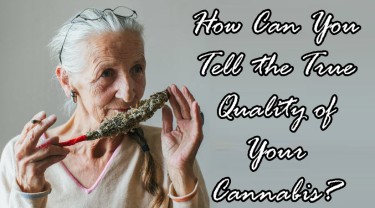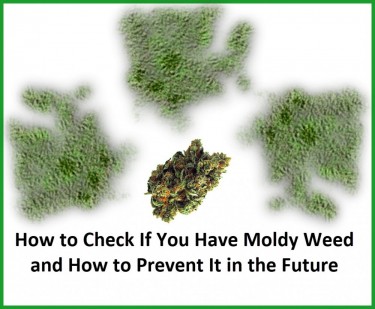
How can you tell if your cannabis bud is No Bueno?
It is impossible to always select only the best buds. Even the best cannabis breeders and bud growers in the world make bud picking mistakes. Every once in a while, buds with an unusual appearance, taste, or texture will be harvested alongside regular buds. You don’t have to judge yourself when this happens. There are even times when a bud appears perfect at harvest and later develops problems.
Cannabis bud contamination is fairly common. They are recognized when the texture, taste, or aroma of the buds differs. Everyone wants a weed stash free of contamination. So here’s a comprehensive process to identify and avoid bud with contaminants the next time you harvest or process your harvest.
Cannabis Analysis
This basically involves seeing, touching and smelling your buds to check for contamination.
Step one: visual inspection
This can be done with the naked eye or a microscope. If you notice that your cannabis buds are covered in too much shiny, crystalline matter, something could be afoot. During the harvesting process, shake out your buds and check out the drop-off substances. Some impurities you may see are granules, crystals, or powder. If you cannot identify some of these substances, it is best to do further analysis.
Step Two: Check by feel
The visual check is not the end of the analysis, even if it doesn’t reveal anything negative. Please pick up a bud to see if it is crumbling or drying out quickly. Also check if they are heavier than they should be and what happens when exposed to air.
If the answer to the above questions is yes, then your buds could be contaminated.
Step three: smell and taste check
Before lighting the buds, take a whiff to get a better reading. However, this only works if you know what a good nug smells and tastes like. If you catch a whiff or taste of chemicals or other unnatural substances, you may have contaminated buds.
Step 4: Examine the burnt grass
If you light the rolled up buds, check to see if the buds give off sparks when you inhale. Also check how the flame looks immediately and after lighting the weed. If you hear a crackling sound when you hit the buds, it is very likely that your buds are contaminated.
Also check the taste and smell the weed gives off; As soon as you notice an unusual smell, you should put the weed away and stop inhaling.
Step Five: Examine the Leftovers
This is the last operation. If the previous inspections didn’t yield strange results, the ash left behind still needs to be watched. An uncontaminated bud will leave a dark gray ash that is obviously dry and soft to the touch. If you see pitch black, hard, or greasy ash, then your buds contain one or more contaminants.
Types of cannabis contaminants
Cannabis is often – directly or indirectly – exposed to pollutants. The most common culprits are sugar, sand, Brix fertilizer, hairspray, and industrial pesticides or fertilizers.
sand
Sand is one of those natural residues that can elude even the most seasoned cannabis connoisseur. Sand is an unavoidable material on farms, so there is a high possibility that it will accidentally contaminate the products. Some unscrupulous growers tend to intentionally add sand to their products as it gives the buds a shinier and heavier appearance.
It is always advisable to shake out your buds and sieve the ground ones before packing them.
Industrial pesticides or fertilizers
These often appear in commercially grown cannabis buds. Their presence in cannabis products can put consumers at risk of developing life-threatening diseases. Many of these chemicals are no longer available for credible reasons such as protecting crops and maximizing growth. However, consuming these dangerous chemicals over time can lead to diseases like neurotoxicity and asthma.
These impurities are not always detectable. The best way to check if your buds are contaminated by industrial pesticides or fertilizers is through lab testing.
One of the typical industrial pesticides and fertilizers is lead.
Other cannabis contaminants to watch out for are:
Avoiding contamination in cannabis buds
Inspection can be a very tedious process. Correction is much more complicated than prevention. Therefore, it is better to practice the following suggestions.
Check for contamination before buying
If you’re looking to purchase cannabis, use the methods above to confirm that the intended product is uncontaminated. Try to do the inspection in store or as soon as you arrive at a private location.
self-cultivation
What better way to know what you’re consuming than by personally growing your own produce? Growing your own weed allows you to monitor what your cannabis is exposed to. They personally regulate the facility’s environment to ensure it is not exposed to harmful contaminants.
Do you have a trustworthy pharmacy
There will be times when you have no choice but to look for a product in a cannabis store – most likely because you have run out of your own home grown supply. It is advisable to have a trustworthy pharmacy and delivery company. Favor reputable outlets that have dedicated product testing and inspection staff. Many reputable pharmacies do not risk their company’s reputation by stocking unsafe products.
bottom line
If you are ever faced with contaminated cannabis bud or product, the severity of the contamination will determine whether or not you need to dispose of it. Some contaminated buds can be cleaned with the right materials. However, if you don’t have time to do this yourself, it’s best to throw them away.
Water hardening is best for removing contaminants like sand and sugar. While not guaranteed to wash off every contaminant, it will not affect the bud’s Terpene Orr cannabinoid profile.
The main goal when detecting impurities in cannabis bud is to ensure we are picking up purer and smoother hitting bud. Check your bids for home grown and purchased cannabis carefully at all times, if not on something, but stay safe.
CHECK YOUR WEED QUALITY, READ MORE..

HOW DO YOU RECOGNIZE THE TRUE QUALITY OF YOUR CANNABIS?
OR..

HOW TO CHECK IF YOU HAVE MOLDY CANNABIS BUDS!

Post a comment: